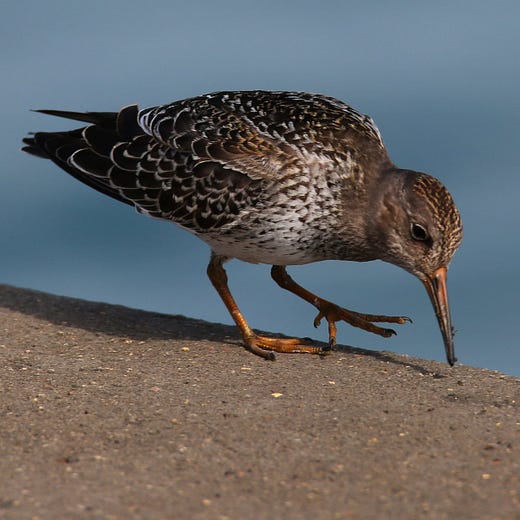There's more to the Bahamas than fun in the sun
A walk through the coppice forest.
I suppose most people go south to the Bahamas and head to the beaches. Don’t get me wrong, I love the beaches. Emerald waters, a steady breeze, and pink sands that stretch for miles.
Maybe it’s because I love a good hike, but I’ve always had the instinct to head inland. With many Bahamian islands just a mile or so wide, there isn’t much actual land inland. What’s impressive, though, is there’s a dynamic and very unique ecosystem that’s established itself amid the scratchy limestone ridges, pungent salt ponds, and bio-rich sinkholes of the islands.
One eco-type that’s captured my imagination is the coppice forest. It’s a stunted forest, of relatively low trees with shallow roots. This is the legerdemain of the Bahama Mockingbird, the Great Lizard Cuckoo, Greater Antillean Bullfinch, and Thick-billed Vireo. If you’re lucky, you might find the rare Kirtland’s Warbler, a Michigan bird that winters almost exclusively on the archipelago.
Until a few years ago, I never really explored the coppice forest. That would most likely require a machete and head-to-toe safari gear, not to mention a boatload of bug spray and avoiding all the poisonwood. Then something amazing happened with the opening of the Leon Levy Native Plant Preserve, a national park set right in the middle of the coppice forest and funded by a foundation based in New York City. It’s a place that celebrates the coppice forest and all sorts of aspects of the Bahamas’ natural and cultural heritage.
So I took a walk through the coppice forest in April at the preserve, and you can experience that a bit in the below video. The forest we see today is actually second-growth. As untrammeled as the island feels at times, it’s sadly been deforested at least once in the past.
Of course, there are interesting birds on the beaches, too. American Oystercatchers, Laughing Gulls, Royal Terns, Ruddy Turnstones, and Wilson’s Plovers are all common here. You might recall the Piping Plover I found by happenstance last spring, too.
The lesson here for me—aside from being grateful for the Bahamas National Trust and the Leon Levy Foundation—is that there’s usually much more to a place than meets the eye. The coppice forest won’t be found in any tourist brochures, at an all-inclusive resort, or on any cruise itineraries.
For better or worse, I tend to see the more popular attractions, often tourist attractions, and then walk in the opposite direction as quickly as possible. If we stayed on the beaten path, we wouldn’t have the pleasure of discovering the beauty of a place like the coppice forest.
IOS Big Sit set for this weekend
Teams like the Zugun-Sittas, the Fort Sheridan Diamond Dogs, the Spotting OwlYMPIANS and Chautauquackers are going to be back at it again this weekend, sitting in a 17-foot circle and identifying as many bird species as possible. The Illinois Ornithological Society (IOS) Big Sit returns this Friday through Sunday, and most anyone can participate from most anywhere in this grand tradition of birding. The event also serves as a fundraiser for IOS and you can sign up here. Last year, two teams deadlocked for first place at 101 species, just one off the record pace of 102. As much as there is friendly competition, birders of all skill levels may enjoy a day of camaraderie and interesting species out in the field.
I’m going to be counting birds from my little backyard patio on Friday as part of the Big Sit. If you’d like to support my “team” and make a donation, you can do so here.
Parting shot
Speaking of shorebirds…an early-season Purple Sandpiper, a bird of the craggy shores of the North Atlantic, showed up at Montrose Point on Saturday.
Press the like button below if you enjoyed this post, or leave a comment!











